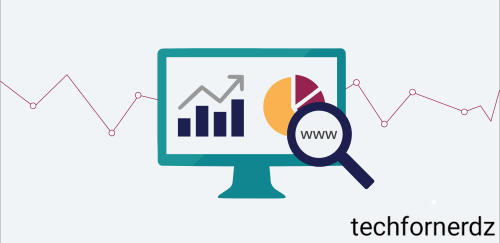What is Google Analytics?
Google Analytics is a web analytics site that provides basic analytical tools. Anyone with a Google account can even use the service. Which would be part of the Google Marketing Platform and is free.
It is used in tracking the operation of a website. Also to gather information about its visitors. It can help companies in determining the top sources of user traffic. Tracking goal completions (such as purchases and adding products to shopping carts), recognizing patterns .trends in user engagement, and obtaining other visitor data such as demographics. Google Data is constantly used by small and medium-sized retail websites to collect. Analyze various customers said that that can be utilized to optimize marketing campaigns, generate website traffic, and better retain customers.

How does Google Analytics work?
Google Analytics uses page tags to collect data from each website visitor. Each page has a JavaScript page tag inserted into the code. This tag collects data from every visitor’s web browser and sends it to one of Google’s data collection servers.
The page tag collects visitor information by serving as a web bug or web beacon. Google Analytics has tools to help users spot patterns and trends in how visitors interact with their websites. Information gathering, analysis, monitoring, modelling, reporting, and integration with other applications are all possible with the features.
Google Analytics (GA) is a web analytics tool offered by the search engine giant. It is currently associated with the Google Marketing Platform brand.
GA is used to track a website’s performance and effectiveness. It basically gives you real-time access to numerous forms of information and statistics about your site, such as the number of visitors, web traffic, geospatial information about your website users, and conversion rate.
With this data, you can make the best judgments about which components of your website to update or improve, as well as what new items to introduce to meet the website’s aims or, more broadly, marketing objectives (since the usual website is usually a core of all marketing activities).
If I may provide a suggestion, don’t put your complete reliance on GA when it comes to your website analytics data. Having an extra analytical tool and the data source is always a smart idea. A smart appearance is my recommendation in this scenario.
These qualities include:
Qualities of Google Analytics
- data visualisation and monitoring tools, such as dashboards, scorecards, and motion charts that show changes in data over time; data filtering, manipulation, and funnel analysis;
- data collection application programme interfaces (APIs); data collection application programme interfaces (APIs);
- Anomaly detection, predictive analytics, and intelligence;
- segmentation for subgroup analysis, such as conversions;
- advertising, acquisition, audience behaviour, and conversion reports;
- email-based communication and sharing;
- Google Ads, Google Data Studio, Salesforce Marketing Cloud, Google AdSense, Google Optimize 360, Google Search Ads 360, Google Display & Video 360, Google Ad Manager, and Google Search Console are among the tools that can be integrated;
Users can save profiles for many websites in the Google Analytics dashboard and view details for default categories or choose custom metrics to display for each site. Content overview, keywords, referring sites, visitors overview, map overlay, and traffic sources overview were amongst the categories that may be tracked.
The dashboard can be viewed on the Google Analytics website and can be inserted into other websites using a widget or plugin. Independent vendors also offer customized Google Analytics dashboards.

Important metrics
While some measures are more significant to some organizations than others, these are the most common ones.
- User: visitor at the website
- Bounce rate : The proportion of visitors who only looked at one page. The Google Analytics server received only one request from these visitors.
- Sessions: The collection of visitor contacts that take place throughout a 30-minute period of activity.
- Average session duration: for how long visitor stays at website
- Percentage of new sessions.amount of visits that are new visits
- Pages per session the average number of pages veiw per each session
- Page views. Total pages viewed.
Metrics vs. dimensions
Dimensions and metrics are included in Google Analytics reports. It’s crucial to know the difference between them in order to properly comprehend reports.
Dimensions. These are qualitative qualities or labels that are used to categorize and organize information. The dimensions would be “Region” if the average session length was being measured across several different regions. “Average session length,” for example, is a metric that is a quantifiable measurement.
dimensions can be customized in google analytics
some common examples of dimensions are
- language,
- browser type,
- city and country,
- models of devices and,
- user age group.
Metrics.
These are numerical measures of a certain sort of data. Average session duration, page views, pages per session, and average time on site are examples of metrics. Metrics are a type of measurement that may be compared across several dimensions.
Benefits and limitations
Google Analytics has some advantages and limitations. The benefits are generally related to the fact that the platform is powerful, free, and easy to use. Google Analytics also has the following benefits:
- The service is free, easy to use and beginner friendly.
- Google Analytics offers a variety of metrics and customizable dimensions. Many different types of useful insights can be captured using this platform.
- Google Analytics also contains many other tools, such as data visualization, monitoring, reporting, predictive analysis, etc.
Google Analytics historically has some shortcomings that may affect its data accuracy, including the following:
- Overall data accuracy can be compromised by users who block Google Analytics cookies, certain browser extensions, ad filtering programs and privacy networks.
- The report is generated by sampling 500,000 random sessions to offload the server. In addition, these reports only show visit count tolerances. Therefore, small data segments can contain very large margins of error.
User acquisition data vs. user behavior data
Google Analytics can provide businesses with multiple types of data for marketing purposes.
User Acquisition Data provides information about how customers visit your website. Customers can access through a variety of channels, including paid search engine results, free search engine results, social media links, or simply enter a URL. Understanding user acquisition data is important for maximizing website traffic.
User behaviour data shows what your customers are doing on your website and how they interact with it. This includes the amount of time you spend on each page, the number of pages you visit, and whether you work with videos and graphics. You can use this data to create web layouts that better connect to the content you’re looking for for your visitors for a more effective user experience.
Google Analytics 4
The most recent version of this service, Google Analytics 4, or GA4, was published in October 2020.GA4 is an improvement over previous versions of Google Analytics. It provides a whole new user interface and is moving from relying on third-party cookies to using machine learning to improve the accuracy of data.
Features that are new in Google Analytics 4 include:
- machine learning and artificial intelligence tools;
- deeper integration with Google Ads;
- customer-centric reporting designed around lifecycle data;
- additional codeless tracking features that can provide data with less latency; and
- enhanced data control features for regulatory compliance and data management.

Privacy
Being ubiquitous, Google Analytics raises privacy concerns. When someone visits a website that uses Google Analytics, Google uses your IP address to track who you visit in order to determine your approximate geographic location. To meet German legal requirements, Google Analytics can anonymize IP addresses. Google has also released a browser plugin that prevents data about page access from being sent to Google, but this browser extension is not available in mobile browsers.
his plugin was created and distributed by Google itself, so it has received a lot of debate and criticism. In addition, the implementation of Google Scripts that track user behaviour has created several (often open-source) browser plugins that reject tracking cookies. These plugins allow users to block activity tracking by Google Analytics and similar websites
Many browsers allow users to reject third-party cookies and tracking scripts. There have been complaints of issues changing the date and registering bogus searches behind proxy servers and various firewalls. Webmasters looking to mitigate certain privacy issues in Google Analytics can use several alternatives by hosting the backend on their computer. An example of such a product until it was discontinued was Google’s own Urchin Web Analytics software. On January 20, 2015, the Associated Press reported that HealthCare.gov allowed private companies specializing in advertising access to participants’ personal data. Google Analytics was explicitly mentioned.
from https://ift.tt/3yTV9GJ



0 Comments